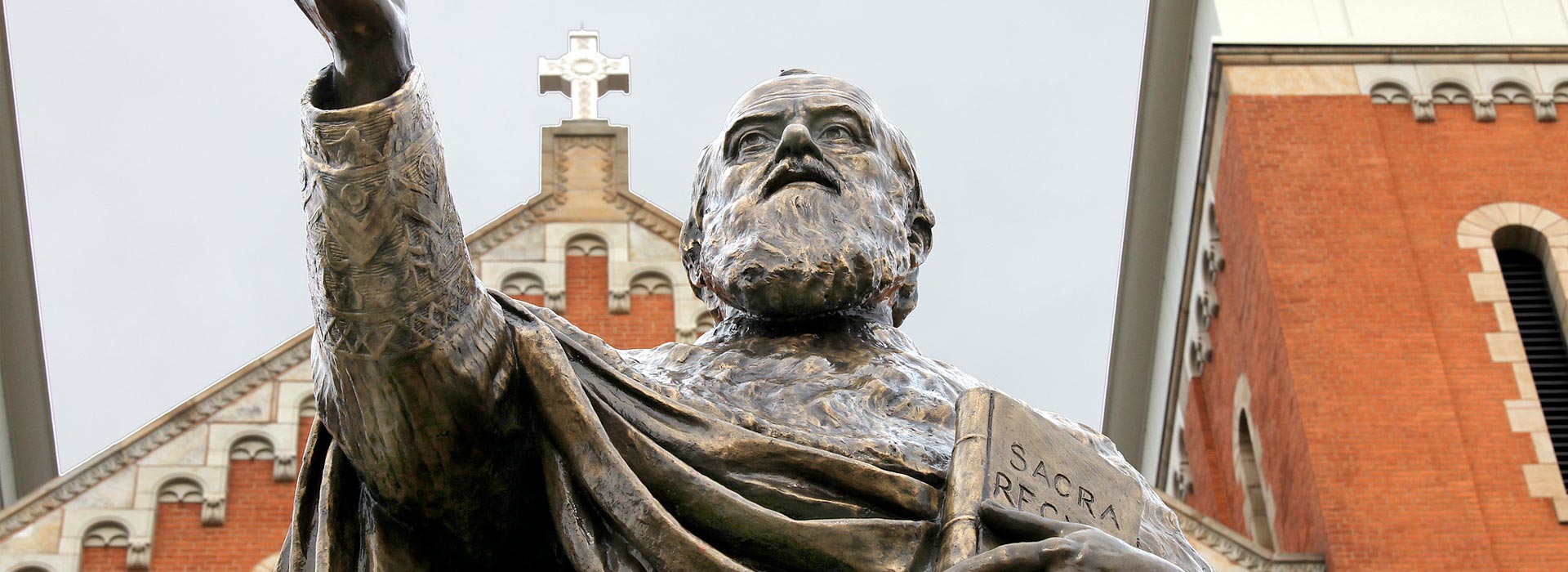Near the end of his Rule, St. Benedict has this to say about the spirit that ought to animate the life of monastics:
Just as there is a wicked zeal of bitterness which separates from God and leads to hell, so there is a good zeal which separates from evil and leads to God and everlasting life. This, then, is the good zeal which monks must foster with fervent love: They should each try to be the first to show respect to the other (Rom 12:10), supporting with the greatest patience one another’s weaknesses of body or behavior, and earnestly competing in obedience to one another. No one is to pursue what he judges better for himself, but instead, what he judges better for someone else. To their fellow monks they show the pure love of brothers; to God, loving fear; to their abbot, unfeigned and humble love. Let them prefer nothing whatever to Christ, and may he bring us all together to everlasting life. (RB 72)
There is an analogous “good zeal” for a Benedictine educational institution. It results from cultivating the hallmarks of Benedictine education – love, prayer, stability, conversatio, obedience, discipline, humility, stewardship, hospitality and community – with wise and carefully directed energy. To be sure, these hallmarks will manifest themselves differently in each Benedictine college and university. But to the extent that a campus community keeps renewing its understanding of and fidelity to these hallmarks, it will provide a lively home for the Catholic intellectual tradition in keeping with the culture and spirituality, the core values and hopes of the sponsoring monastery. The graduates of such a school will be able to engage the promise and peril of their times with confidence, deepening and expanding the reach of peace, justice and human dignity throughout their lives. Fostering the educational experience capable of producing such graduates is worthy of the varied gifts and talents, the passionate commitment and full support of the entire campus community, as well as the broader human family.
Endorsed by the ABCU Executive Committee, August 27, 2007
Notes
1 This prologue draws heavily from “Benedictine Wisdom and the Catholic Intellectual Tradition,” an address delivered by William J. Cahoy at the meeting of the Association of Benedictine Colleges and Universities on June 28, 2006. An enormous list of books and articles have been written about the Catholic Intellectual Tradition, as well as church-related higher education and Catholic education, in particular. A selected bibliography, as well as links to Dr. Cahoy’s address and other important sources, may be found at www.abcu.info.
2 Monika Hellwig, “The Catholic Intellectual Tradition in the Catholic University,” Examining the Catholic Intellectual Tradition (ed. Anthony Cernera and Oliver Morgan; Fairfield, CT: Sacred Heart University Press, 2000), 1-18 [available at www.sacredheart.edu/pages/2523_cit_in_the_catholic_university.cfm] and “What Can the Roman Catholic Tradition Contribute to Christian Higher Education,” Models for Christian Higher Education: Strategies for Success in the Twenty-First Century (ed. Richard Hughes and William Adrian; Grand Rapids, MI: Eerdmanns, 1997), 13-23.
3 Joel Rippinger, OSB, The Benedictine Order in the United States: An Interpretive Essay (Collegeville, MN: Liturgical Press, 1990), 116-29.
4 John Paul II, Apostolic Constitution, Ex Corde Ecclesiæ (1990), n. 43.
5 See Lawrence Boadt, CSP, "An Introduction to the Wisdom Literature of Israel," Collegeville Bible Commentary (ed. Dianne Bergant, CSA and Robert J. Karris, OFM; Collegeville, MN: Liturgical Press, 1989) 634-43; Dianne Bergant, "The Wisdom Books," Catholic Study Bible (ed. Donald Senior; New York/Oxford: Oxford University Press, 1990) Readers' Guide, 231-32.
6 References to the Rule are from RB 1980: The Rule of St. Benedict in Latin and English with Notes (ed. Timothy Fry, OSB, et al.; Collegeville, MN: Liturgical Press, 1981).
7 John Leclerq, OSB, The Love of Learning and the Desire for God: A Study of Monastic Culture, 3rd ed., (NY: Fordham University Press, 1982).
8 See Aquinata Böckmann, OSB, Perspectives on the Rule of Saint Benedict: Expanding Our Hearts in Christ (Collegeville, MN: Liturgical Press, 2005), 163-194.


